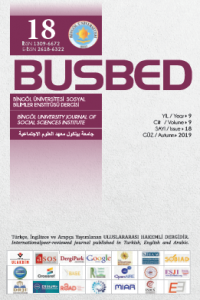MURAT TEPE’DE ELE GEÇEN URARTU DÖNEMİ METAL ESERLERİ
URARTU (URARTIAN) PERIOD METAL ARTIFACTS AT MURAT TEPE
Author(s): Abdulkadir ÖzdemirSubject(s): Anthropology, Archaeology
Published by: Bingöl Üniversitesi Sosyal Bilimler Enstitüsü
Keywords: Eastern Anatolia; Bingöl; Urartu (Urartian); Metal Artifacts; Fibula;
Summary/Abstract: This paper; introduces the results of a rescue excavation conducted at the site of Murat Tepe, located on a natural hillock along the banks of the Murat River. In Murat Tepe, local traces of the Urartian art of jewelry, one of the strongest civilizations of the Near East, reigned in 9-7 BC. The site most likely acted as a way-station (or staging-post) within the sophisticated land-based Urartian road network that connected the heartland of the Urartian kingdom to the Elazığ region (Alzi) on its western frontier during the Middle Iron Age. Because in this settlement, architectural remains belonging to a rectangular structure with many rooms and projecting buttresses on the corners rizalite were uncovered. The pottery assemblage recovered from the site represents regional versions of typical Urartian pottery, while metal objects such as bronze eyelettype pins, bracelets, earrings, ring necklace, fibula, and belts display characteristic features of comparable finds known to us from major excavated Urartian sites of this period. The metal works of Murat Tepe make a significant contribution to our archeological knowledge about the existence of Urartu in Bingöl region in the Middle Iron Age.
Journal: Bingöl Üniversitesi Sosyal Bilimler Enstitüsü Dergisi (BUSBED)
- Issue Year: 9/2019
- Issue No: 18
- Page Range: 731-749
- Page Count: 19
- Language: Turkish

